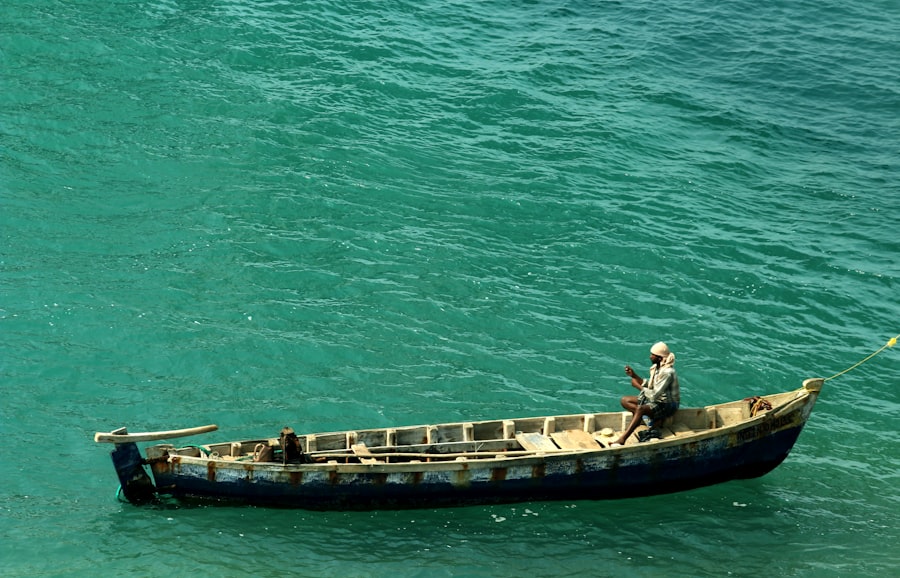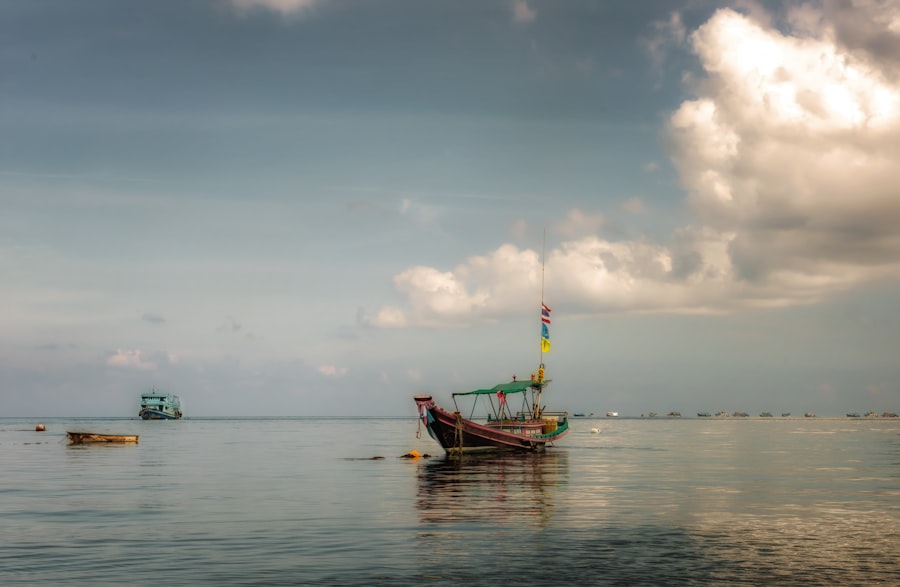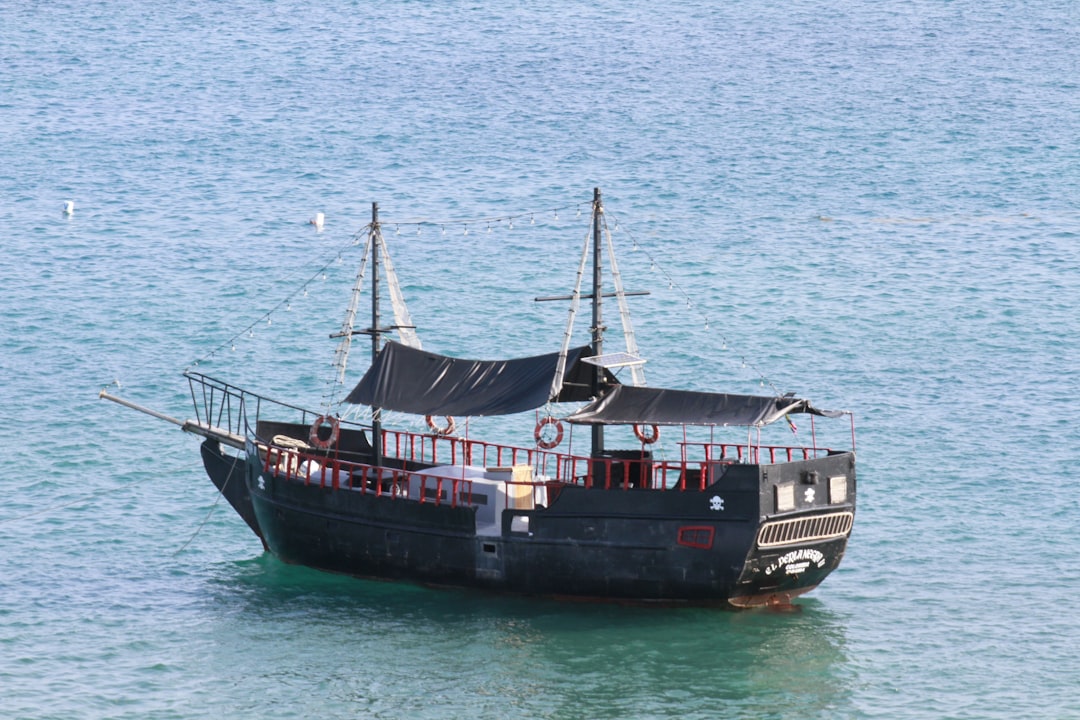The Strait of Malacca, a narrow waterway that separates the Malay Peninsula from the Indonesian island of Sumatra, has long been recognized as one of the most significant maritime passages in the world. This strait serves as a vital conduit for international shipping, linking the Indian Ocean to the South China Sea and facilitating trade between Europe, the Middle East, and Asia. However, its strategic importance has also made it a hotspot for piracy, with a history that stretches back centuries.
The challenges posed by piracy in this region have evolved over time, necessitating a deeper understanding of its implications for global trade and maritime security.
The strait’s narrowness and heavy traffic create an environment where piracy can thrive, leading to concerns among shipping companies and governments alike.
As vessels traverse these waters, they must remain vigilant against potential threats, making it essential to explore the historical context, current situation, and future outlook for piracy in this critical maritime corridor.
Key Takeaways
- The Piracy Strait of Malacca is a crucial waterway for international trade, connecting the Indian and Pacific Oceans.
- The history of piracy in the Malacca Strait dates back centuries, with incidents of piracy occurring due to its strategic location.
- The current piracy situation in the Malacca Strait involves a range of criminal activities, including armed robbery, kidnapping, and hijacking of ships.
- Navigating the Piracy Strait of Malacca requires careful planning and adherence to security measures, such as using designated shipping lanes and maintaining communication with authorities.
- The Malacca Strait is of immense importance for international trade, with over 94,000 vessels passing through annually, making it vital for global commerce.
Understanding the History of Piracy in the Malacca Strait
The history of piracy in the Strait of Malacca is as old as maritime trade itself. From the 16th century onward, European colonial powers recognized the strait’s strategic value and sought to control it. This led to an increase in piracy as local and foreign pirates took advantage of the tumultuous political landscape.
The strait became notorious for its lawlessness, with pirates targeting merchant ships laden with valuable cargoes. The infamous pirate fleets of the 17th century, such as those led by the notorious Captain Morgan, roamed these waters, creating a legacy of fear and disruption. As trade expanded in the region, so did the prevalence of piracy.
The 19th century saw a resurgence of pirate activity, particularly among local Malay pirates who capitalized on the strait’s busy shipping lanes. These pirates often operated in small, agile boats that allowed them to ambush larger vessels. The British colonial authorities attempted to suppress piracy through military action and treaties with local rulers, but these efforts were met with varying degrees of success.
The historical context of piracy in the Malacca Strait reveals a complex interplay between commerce, colonialism, and local resistance, setting the stage for contemporary challenges.
Current Piracy Situation in the Malacca Strait

In recent years, the piracy situation in the Strait of Malacca has seen fluctuations, with periods of increased activity followed by relative calm. According to reports from maritime security organizations, incidents of piracy have decreased significantly since their peak in the early 2000s. However, the threat remains ever-present, particularly as economic conditions fluctuate and regional tensions rise.
Modern pirates often employ sophisticated tactics, including hijacking vessels for ransom or stealing cargoes, which poses significant risks to shipping companies operating in these waters. The current piracy landscape is characterized by a shift towards organized crime syndicates that operate across national borders. These groups are often well-funded and equipped with advanced technology, making them formidable adversaries for maritime security forces.
Despite international efforts to combat piracy, challenges persist due to the vastness of the strait and the limited resources available for patrolling its waters. As such, shipping companies must remain vigilant and proactive in their approach to navigating this critical maritime corridor.
Tips for Navigating the Piracy Strait of Malacca
| Tip | Description |
|---|---|
| Stay Informed | Keep updated with the latest piracy incidents and security alerts in the area. |
| Use Secure Communication | Utilize encrypted communication channels to avoid interception by pirates. |
| Travel in Groups | It is safer to travel in a convoy with other ships to deter pirate attacks. |
| Deploy Anti-Piracy Measures | Implement security measures such as barbed wire, high-pressure hoses, and citadels. |
| Report Suspicious Activity | Immediately report any suspicious boats or activities to the relevant authorities. |
For vessels traversing the Strait of Malacca, adopting a proactive approach to safety is paramount. One essential tip is to stay informed about current piracy trends and incidents reported in the region. Shipping companies should utilize resources such as maritime security reports and advisories from organizations like the International Maritime Bureau (IMB) to assess risks before setting sail.
Additionally, maintaining open lines of communication with other vessels in the area can provide valuable insights into potential threats. Another crucial strategy involves implementing best practices for vessel security. This includes employing measures such as increasing watchkeeping personnel during transit through high-risk areas and utilizing anti-piracy technologies like citadels—secure areas within ships where crew members can take refuge during an attack.
Furthermore, vessels should consider traveling in convoys or utilizing armed escorts when navigating particularly dangerous sections of the strait. By prioritizing safety and preparedness, shipping companies can significantly reduce their vulnerability to piracy.
Importance of the Malacca Strait for International Trade
The Strait of Malacca plays an indispensable role in global trade, serving as one of the busiest maritime routes in the world. Approximately 40% of global trade passes through this narrow passage, including vital shipments of oil, natural gas, and consumer goods. The strait’s significance is underscored by its function as a shortcut for vessels traveling between Europe and Asia, drastically reducing transit times compared to alternative routes around Africa or through other waterways.
The economic implications of any disruption in this vital corridor are profound. A significant increase in piracy or other security threats could lead to higher shipping costs, increased insurance premiums, and potential delays in delivery schedules. Such disruptions could ripple through global supply chains, affecting industries far beyond those directly involved in maritime trade.
Therefore, ensuring the safety and security of the Strait of Malacca is not only crucial for regional economies but also for maintaining stability in international markets.
International Efforts to Combat Piracy in the Malacca Strait

In response to the persistent threat of piracy in the Strait of Malacca, various international initiatives have been launched to enhance maritime security. One notable effort is the establishment of cooperative frameworks among countries bordering the strait, including Malaysia, Indonesia, and Singapore. These nations have engaged in joint patrols and information-sharing agreements aimed at deterring pirate activity and improving response times to incidents.
Additionally, organizations such as the Regional Cooperation Agreement on Combating Piracy and Armed Robbery against Ships in Asia (ReCAAP) have been instrumental in fostering collaboration among member states. ReCAAP facilitates information exchange on piracy incidents and best practices for maritime security while promoting capacity-building initiatives for regional navies and coast guards. These collective efforts underscore a commitment to safeguarding one of the world’s most critical maritime corridors.
Legal Implications of Piracy in the Malacca Strait
The legal framework surrounding piracy in the Strait of Malacca is complex and multifaceted. Under international law, piracy is defined by the United Nations Convention on the Law of the Sea (UNCLOS), which provides guidelines for prosecuting acts of piracy on the high seas. However, enforcement can be challenging due to jurisdictional issues and varying legal standards among nations.
In practice, prosecuting pirates often requires cooperation between countries whose vessels are involved or whose nationals are affected by pirate attacks. This can lead to complications when determining which nation has jurisdiction over a particular case. Furthermore, some countries may lack adequate legal frameworks or resources to effectively prosecute pirates captured during anti-piracy operations.
As such, addressing these legal implications is essential for ensuring that perpetrators are held accountable and that maritime security is upheld.
Technology and Security Measures for Navigating the Malacca Strait
Advancements in technology have played a pivotal role in enhancing maritime security within the Strait of Malacca. Modern vessels are increasingly equipped with sophisticated navigation systems that allow for real-time tracking and monitoring of ship movements. This technology enables shipping companies to identify potential threats quickly and adjust their routes accordingly.
Moreover, various security measures have been implemented to bolster defenses against piracy. For instance, many vessels now employ anti-piracy equipment such as water cannons and electric fencing systems designed to deter boarding attempts. Additionally, satellite surveillance systems provide comprehensive coverage of maritime activities in the strait, allowing authorities to respond swiftly to incidents as they arise.
By leveraging technology and innovative security measures, shipping companies can significantly enhance their resilience against piracy.
Environmental Concerns in the Malacca Strait
While discussions about piracy often dominate conversations surrounding the Strait of Malacca, environmental concerns also warrant attention. The strait is home to diverse marine ecosystems that are vulnerable to pollution from shipping activities and potential oil spills resulting from pirate attacks on tankers. The delicate balance between economic activity and environmental preservation poses significant challenges for policymakers.
Efforts to mitigate environmental impacts include implementing stricter regulations on waste disposal from vessels operating in these waters and promoting sustainable shipping practices. Additionally, raising awareness among shipping companies about their environmental responsibilities can foster a culture of stewardship that prioritizes ecological health alongside economic interests. Addressing these environmental concerns is crucial for ensuring that future generations can continue to benefit from the rich resources offered by the Strait of Malacca.
Cultural and Historical Significance of the Malacca Strait
Beyond its economic importance, the Strait of Malacca holds deep cultural and historical significance for the nations that border it. Historically known as a melting pot of cultures due to its role as a trading hub, the strait has witnessed interactions between diverse civilizations over centuries. From ancient traders to colonial powers, each group has left an indelible mark on the region’s cultural landscape.
Today, this rich heritage is reflected in various aspects of life along the strait—from architecture and cuisine to language and traditions. The cities that line its shores boast vibrant histories that attract tourists seeking to explore their unique identities. Preserving this cultural legacy while addressing contemporary challenges such as piracy requires a delicate balance between development and heritage conservation.
Conclusion and Future Outlook for Navigating the Piracy Strait of Malacca
As global trade continues to evolve, so too will the dynamics surrounding piracy in the Strait of Malacca. While significant progress has been made in reducing incidents over recent years through international cooperation and technological advancements, challenges remain that require ongoing vigilance and adaptation. The interplay between economic interests, maritime security, environmental sustainability, and cultural preservation will shape future strategies for navigating this critical waterway.
Looking ahead, fostering collaboration among nations bordering the strait will be essential for addressing both piracy and environmental concerns effectively. By leveraging technology and enhancing legal frameworks while respecting cultural heritage, stakeholders can work together to ensure that the Strait of Malacca remains a safe passage for international trade while preserving its rich history for generations to come.
This narrow stretch of water, linking the Indian Ocean with the Pacific, sees thousands of vessels passing through each year, making it a prime target for pirates seeking to hijack ships and steal valuable cargo. Efforts to combat piracy in the region have been ongoing, with international cooperation playing a key role in enhancing security measures. For more insights into the geographical significance and challenges faced in the Strait of Malacca, you can explore a related article on MyGeoQuest.
WATCH NOW! Unlocking Disaster: 7 Choke Points That Could Fracture Our Connected World Overnight
FAQs
What is the Strait of Malacca?
The Strait of Malacca is a narrow stretch of water between the Malay Peninsula and the Indonesian island of Sumatra. It is one of the most important shipping lanes in the world, connecting the Indian Ocean to the Pacific Ocean.
What is piracy in the context of the Strait of Malacca?
Piracy in the context of the Strait of Malacca refers to the act of robbery or criminal violence at sea, typically targeting ships passing through the strait. Pirates may hijack ships, steal cargo, or harm crew members.
Why is piracy a concern in the Strait of Malacca?
Piracy is a concern in the Strait of Malacca due to its strategic importance as a major shipping route. The high volume of maritime traffic passing through the strait makes it a prime target for pirate attacks.
What are the main causes of piracy in the Strait of Malacca?
The main causes of piracy in the Strait of Malacca include the region’s economic disparities, weak law enforcement, and the presence of organized crime groups. These factors contribute to the vulnerability of ships passing through the area.
What measures are being taken to combat piracy in the Strait of Malacca?
Efforts to combat piracy in the Strait of Malacca include increased maritime patrols, international cooperation among affected countries, and the implementation of security measures on ships. Additionally, the Regional Cooperation Agreement on Combating Piracy and Armed Robbery against Ships in Asia (ReCAAP) has been established to address piracy in the region.
